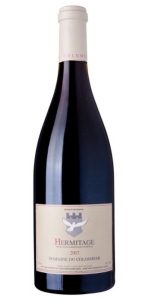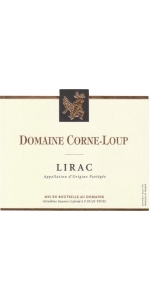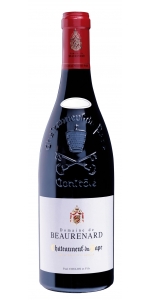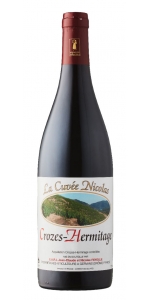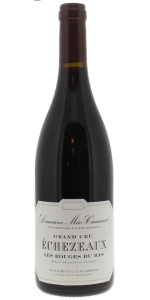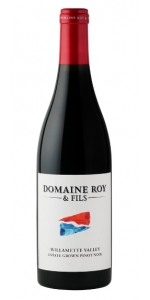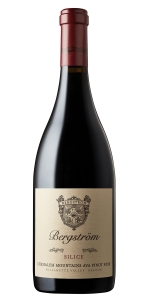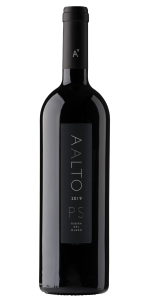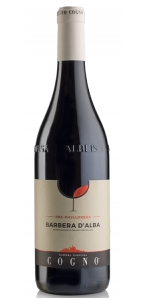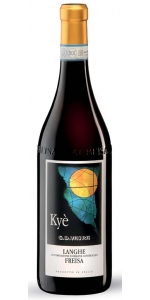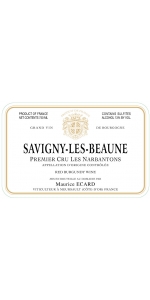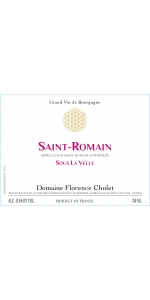Domaine Tollot-Beaut Aloxe-Corton Rouge 2018
| Country: | France |
| Region: | Burgundy |
| Winery: | Tollot-Beaut |
| Grape Type: | Pinot Noir |
| Organic: | Yes |
| Vintage: | 2018 |
| Bottle Size: | 750 ml |
Domaine du Colombier Hermitage Rouge is made from 100 percent Syrah.
Perfect with beef ribs, grilled meats and cheese.
Manually harvested with destemmed grapes and fermented for about 2 to 3 weeks in temperature controlled vats, with an ageing period of 12 months, 65% in oak barrels and 35% in concrete tanks.
Review:
Brought up in 30% new demi-muids, with the balance in used barrels, the 2017 Hermitage is beautifully pure and layered, with smoking good notes of crème de cassis, white flowers, crushed rocks, and violets. Deep, full-bodied, and concentrated on the palate, it has plenty of tannins and is going to need 5-7 years of bottle age. This is a sensational Hermitage from Colombier that will drink well for 25+ years.
These wines are made by the talented Florent Viale and shine for their purity as well as character. While the winemaking here is traditional, with the wines destemmed and brought up mostly in used demi-muids, the purity of fruit can give the impression that wines are more modern styled than they are. They will all benefit from short-term cellaring.
-Jeb Dunnuck 96+ Points
Corne Loup Lirac Rouge is made from 50% Grenache, 40% Syrah and 10% Mourvedre
Dry - less than 4 grams/liter
Color: dark red ruby.
Aromas: red berries, truffles and spices.
Flavors: complex and rich. It shows red and black fruits, with an herbal spice type of aromas coming from the surrounding vegetation (Garrigue).
The average age of the vines is 40 years. (The oldest vines are 80 years old).
The soil is mainly sandy marl and small pebble stones.
Pairs with lamb, duck, turkey, red meat, game and cheese.
Domaine de Beaurenard Chateauneuf-du-Pape is made from 65% Grenache, 15% Syrah, 10% Mourvèdre.
Domaine de Beaurenard’s flagship wine is a quintessential blend, reflecting all the diversity of the terroir and the perfect synergy that exists between the soils and the grapes. It offers a supple and refined texture associated with a delicate aromatic palette that is the result of a constant quest for freshness.
Review:
Checking in as a blend of 65% Grenache, 15% Syrah, 10% Mourvèdre, and the rest a handful of varieties, the 2019 Châteauneuf Du Pape was brought up in a mix of foudre and older barrels. This deep ruby/purple-hued effort has a pure, vibrant, incredibly seamless, medium to full-bodied style that carries classic notes of black raspberry and black cherry fruits as well as peppery herbs, violets, spring flowers, and sous bois. This straight-up gorgeous, seamless, ultra-fine 2019 should be snatched up by readers. It has a rare mix of elegance, purity, and power, and it’s going to have two decades of prime drinking.
-Jeb Dunnuck 95 Points
Fayolle Crozes-Hermitage Rouge Cuvee Nicolas is made from 100 percent Syrah.
Deep ruby red color. Nose of red and black currant fruits, pepper, spring flowers, new leather and mineral/earthy nuances. Medium bodied palate of red fruit and spice. Nice balance. Long finish and velvety.
Review:
"Boasting even more striking aromas of blueberries, violets and peppery spice than the La Rochette bottling, the 2018 Crozes-Hermitage La Cuvee Nicolas is almost Côte-Rôtie-like. Medium to full-bodied without seeming at all heavy, ripe without being overdone, silky and fine from start to finish, it's a real beauty and a testament to the potential of the commune of Gervans - a small granitic outpost within the Crozes-Hermitage appellation. - Joe Czerwinski"
- Robert Parker's Wine Advocate (May 13th 2021), 93 pts
Échezeaux is loyal to its appellation through the finesse of its attack on the palate and its overall balance. But it's also a wine with pronounced acidity, which gives it freshness and structure and bestows upon it a sometimes austere finish.
Maison Roy Willamette Valley Pinot Noir is made from 100 percent Pinot Noir.
The Willamette Valley Pinot Noir combines fruit from Roy's Dundee and Yamhill-Carlton estates. Gentle and suave, this Pinot offers inviting red fruit, baking spice, and a touch of purple floral tone. On the palate, a soft tannic structure makes this wine friendly and accessible in its youth and will keep drinking very well for the next 5-7years.
Tollot-Beaut Aloxe-Corton Rouge is made from 100 percent Pinot Noir.
Tollot-Beaut’s Aloxe-Corton is from vines planted between 1973 and 1993. The wine shows aromas and flavors of red cherries, red plum, violets, and earth with bright acidity and moderate tannins. It aged for 18 months in 30% new Burgundian piece.
Red Burgundy might be the world’s most flexible food wine. The wine’s high acidity, medium body, medium alcohol, and low tannins make it very food-friendly. Red Burgundy, with its earthy and sometimes gamey character, is a classic partner to roasted game birds, grilled duck breast, and dishes that feature mushrooms, black truffles, or are rich in umami.
Review:
Textural suppleness is the main attraction of this Corton for the moment, its plummy fruit less expressive than Tollot’s Bressandes (also recommended here). Delicious as a young wine, this may reveal depths and layers of flavor for those who wait.
- Wine & Spirits 93 Points
The Tollot family represents a long lineage of winegrowers dating back to the late 1880s when François Tollot began planting vineyards in Chorey-lès-Beaune. His son, Alexandre Tollot, continued in his father’s footsteps and married Aurélie Beaut. In 1921, Tollot-Beaut became one of the first to bottle their wines under the domaine and started exporting their wines to the U.S. shortly thereafter. Today, cousins Nathalie, Jean-Paul, and Olivier Tollot are in charge. The wines of Tollot-Beaut are well-known for their serious but pleasing style across a range of appellations from Bourgogne to Grand Cru.
Chorey-lès-Beaune lies on the plains below the Côte d'Or escarpment with 136 hectares almost exclusively planted with Pinot Noir. Nearly half of Chorey-lès-Beaune is sold as Côte de Beaune-Villages. Initially, the Tollot family owned vines only in Chorey, but successive generations made small acquisitions in Savigny, Aloxe, and Beaune for a current total of 60 acres. They are the proud owners of two monopoles, Savigny-lès-Beaune Champs-Chevrey and the more recently acquired Chorey-lès-Beaune Pièce du Chapitre. Tollot-Beaut farms lutte raisonée (“reasoned struggle”) and maintains a high proportion of old vines from the highly prized Pinot Fin strain.
The Tollot-Beaut cellar is in the center of Chorey-lès-Beaune on the rue Alexandre Tollot, named after Nathalie’s great grandfather who was once the Mayor of Chorey. Parts of the meticulously kept cellar are over 250 years old. Chardonnay is pressed pneumatically and starts fermentation in stainless-steel tanks before finishing alcoholic and malolactic fermentation in barrel. Pinot Noir is almost entirely de-stemmed. The wines of Tollot-Beaut were once made with more new oak but in recent years the oak influence has become subtler. Village and regional wines receive about 20% new oak while the Grand Crus receive about 60% new oak.
#32 Wine Spectator Top 100 of 2023
Delicate red in color. The incredibly expressive bouquet offers notes of sandalwood, herbs de Provence, and Red Delicious apples. On the palate, freshly picked red huckleberries provide tart and lasting succulence with a hint of baking spice. The sandy soils of the Chehalem Mountains offer salinity and minerality on the finish that is complemented with dark cherry and rhubarb.
Review:
Supple, richly textured and elegantly complex, this Pinot opens with a burst of fresh raspberry, then unfolds with notes of forest floor and brown baking spices, plus a touch of licorice as it builds tension toward refined tannins.
-Wine Spectator 95 Points
The first impression of this stunning red is of brilliant red raspberry fruit, as pure as a sunbeam. Yet an inky depth plays counterpoint, rumbling beneath, dark and a bit spicy, grounding the fruit with tannins from the silica-based soils of Bergström’s estate vineyard in the Chehalem Mountains. The tension between these two elements is gorgeous, the fruit saturating and full, and yet it has an energy and drive giving the texture a lifted, graceful feel.
-Wine & Spirits 95 Points
Aalto P.S. Pagos Seleccionados Tinto is made from 100 percent Tempranillo.
Climatic conditions
The farming year began with a mild autumn and little precipitation. A very dry winter started with -9ºC reaching at the end higher temperatures than normal for that time of the year. Spring and summer characterized by little rain, only some rain showers in July and late August avoided the hydric stress of the vines. The vegetative cycle of the vine developed with big variations of temperatures, alternating warm and atypical low temperatures of 4ºC for mid-June. The ripening of the grapes happened under very good conditions and the harvest started on 24th September 2019.
Grape origin
100% Tinto Fino (Tempranillo) primarily from very old vines – 60 to 90 years old – from selected plots in La Horra and La Aguilera. The harvest was done by hand, in small boxes of 15 kilos that are thoroughly inspected, bunch by bunch, on the selection table.
Tasting notes
Average oak ageing
Aged for 21 months in new French oak barrels.
Review:
Lots of depth here, with ripe blackberries and some nicely baked black cherries, roasted herbs, incense, dark spices, mussels and a balsamic tinge. An admirably fine dollop of tannins on the palate, which are immaculate and juicy, as they thoroughly dunk into the black fruit, melting into a persistent finish that lasts for over a minute. Very impressive. Drink or hold.
-James Suckling 96 Points
Elvio Cogno Pre-Phylloxera Barbera d'Alba is made from 100 percent Barbera.
Produced from one of the last archaic vines of the Langhe area, an open air museum of viticulture from a time gone by, the plants are over one hundred years old. The vines are not grafted but propagated through cuttings, thus maintaining, over the decades, the original Barbera characteristics.
The vineyard has an excellent exposure and sandy-chalky terrain, situated in Berri near La Morra, which guaranteed the vines a natural protection from Phylloxera and imparts unique and exclusive characteristics to the vines. The intriguing simplicity of the vines and their typical, traditional charm that derives from the microclimate and favorable altitude make a one of-a-kind wine.
The low production per hectare guarantees an intensely rare and rich organoleptic concentration. The wine is refined in oak casks that slowly develop the primary aromas. Pleasant and refined, complex even as a young wine but able to withstand bottle aging, it expresses its solid uniqueness even over the years.
A bright, rich ruby color with intense purplish highlights. The aroma is enveloping, aromatic and deep with noticeable spices on first impression and raspberry, strawberry and ripe cherry notes in background. Finish with pleasant harmonies of wild flowers. On the palate it is well structured, fresh and the acidity is excellently balanced, the tannins texture is embracing and flavors remind you of sour cherries, blackberries and prunes.
Review:
Planted in almost entirely sand, this own-rooted vineyard with some vines over 120 years old is a singular expression of Barbera. Elegant aromas of wild rose and fresh bay leaf mixed with cranberry, sour cherry and underbrush are just some of the notes you will discover in this complex wine. The palate is refined and well-balanced with fresh youthful red fruits, fresh flowers and fine tannins driving the wine home. Drink Now–2035.
-Wine Enthusiast 95 Points
G.D. Vajra Freisa 'Kye' Langhe Rosso is made from 100% Freisa.
DESCRIPTION: In 2004, Freisa was discovered to be the closest relative to Nebbiolo, thus explaining the deep bond this variety has with Piemonte and its people. With a noble profile and similar characteristics to the Nebbiolo, we have been bottling a dry Langhe DOC Freisa ever since 1989. Kyé means ‘who is?’ and represents the surprise for this indigenous and forgotten grape.
VINEYARD AND TERROIR: Estate vineyards, the oldest located in San Ponzio, on the lower west border of Bricco delle Viole. This is the closest vineyard to the winery, and a selezione massale planted by Aldo in 1980.
GROWING: In 1971, Aldo Vaira was one of the earliest adopters of organic farming in Piemonte. Vineyards have been nurtured and soil preserved by grassing and cover crop for almost 50 years now. With an incredible ratio of manual work per hectare, farming at Vajra is a labor of love and “recipe-free” attention. Intense research is also placed into monitoring and improving the biodiversity of both flora and fauna not just in the vineyards, but also in the winery fields and forests. The winery is sustainably certified (UNI EN 11233:2009) and will be again fully organic certified since 2019.
Langhe DOC Freisa Kyè displays a beautiful, translucent garnet color. The aromatics are a combination of redcurrant and wild mountain berries, layered with a touch of sweet spices, fresh leather, and candied japonica prune. The mouth is juicy, succulent, with lots -yet never hefty- tannins. There is a beautiful structure in this vintage and a lovely, lovely finish.
Review:
‘The 2018 Langhe Freisa Kyé is quite refined in this vintage and yet it also shows all of the aromatic nuance and complexity that are such signatures of this variety and wine. Dried herbs, rose petal, lavender, mint and spice lend exotic nuance to this deep, beautifully layered Freisa. The Kyé is one of the sleepers of Piedmont's 2018 vintage. It is, quite frankly, ‘as good or better than some Barolos in this tricky vintage. ~- Antonio Galloni
-Vinous 93 Points
Maurice Ecard Savigny Beaune 1er Cru Narbantons is made from 100 percent Pinot Noir
Reduced yields from severe springtime pruning, fully mature harvest and manual selection and sorting. Vinification involves partial destemming, classic fermentation, pigeage, racking of the gross lees.
The wine offers black cherry fruits on the nose. Rich and full bodied with a beautiful texture. Flavorful.
"Sous la Velle" takes its name from its location 'under the village' of Saint Romain. The vineyards enjoy a steep and south facing exposure, planted on marl scree with the vines taking root in the limestone and offering a beautiful minerality to the wine. The nose expresses small red and black fruits, blackcurrant, cherry, raspberry and violet. The mouth provides a rich, supple and elegant wine with a good structure, pure fruit and vibrant acidity.
After destalking the grapes, the juice, skin and pulp are put into the vat for cold maceration. It lasts from 15 to 18 days. The alcoholic fermentation will follow, lasting from 5 to 6 days. These steps may be punctuated by push-downs. Aging in oak for 12 months.
Pork Filet Mignon, Pike Perch, Tomme de Morvan Cheese.
- back
The 2021 Domaine Joseph Voillot Volnay Les Champans Premier Cru is from the domain’s largest premier cru holding, 4.2 acres whose vines date from 1934, 1971, and 1985. Champans is down-slope in the premier cru band, and its wine typically has more fruit and power than other Voillot Volnays.
Review:
‘The 2021 Volnay Les Champans Ter Cru has much more brightness and delineation than the Fremiets this year, with red cherries, wild strawberries and ust a touch of iodine and sous-bois. This is nicely focused. The palate is medium-bodied with sappy red fruit, fine structure, pliant tannins and a harmonious finish. Not the most complex Champans encountered from this address, yet it has class.
-Vinous 91-93 Points
The 2021 les Champans is also a simply stunning example of this fine premier cru vineyard. The beautifully elegant nose wafts from the glass in a blend of red and black plums, cherries, spit-roasted quail, a complex base of soil, woodsmoke, coffee bean and a deft touch of vanillin oak. On the palate the wine is pure, full-bodied and shows off superb depth at the core, great soil signature, ripe, fine-grained tannins and a long, nascently complex and very promising finish. This is a touch more reserved on the palate than the Fremiets and will take a bit longer to blossom, but it is going to be stellar. 2034-2085.
93+ pts- John Gilman, View from the Cellar #102
Zuccardi Finca Piedra Infinita Altamira is made from 100 percent Malbec.
Deep red in color, the Zuccardi Finca Piedra Infinita Altamira expresses great fruity character with notes of red fruit. Grand structure and acidity on the palate with mineral with notes of wet stone and graphite and a long finish.
Review:
Quiet complexity that needs time in the glass. While it is brooding and deep, there is also a perfumed, floral and herbal aspect that makes it so attractive and unforgettable, even at such an embryonic stage. Freshly crushed blueberries, dried licorice, decadent violets, crushed stones and ash on the nose. Satin-textured tannins on the palate, which are tense, chalky and seamless. Powerful and juicy with impeccable balance. A great, cerebral and intrinsic malbec from Argentina. You can drink now, if you want, but it is a wine that you’d want to keep for the next two decades. A real charmer, especially for the wine nerds. Buy this and try!
-James Suckling 99 Points



